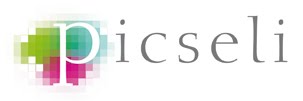
This is the third post in our 'Social Media 4 Non Profit' series, and the second part of 8 Features of Accessible Websites.
Last week we looked at:
- making sure your website works in any browser
- that it can be navigated & used without a mouse
- that text can still be read when resized
- that audio & visual content is available in alternative formats
5. Is a list of all pages available?
Somewhere on your website there should be a list of all of the pages on your site so that visitors can, at a glance, see all of your content and click directly to the page they want. This is often called a Site Map, or could be a Table of Contents or similar.
As well as helping with accessiblity, it also lends a hand to helping boost your search engine rankings, as each page has a guaranteed link back to it. Plus it can help the little 'Google Bots' discover every page on your site to give you a greater chance of being found.
6. Do your links make sense out of context?
Imagine you are skimming through a website and all you can see (or hear) are the words that link somewhere else.... now if all you get are 'click here', 'this link', 'read more', 'here', you don't get much of an idea of where you will get to if you do 'click now'.
Try to make sure that your link text tells people where they are going. For example, in the following sentence 'Find out more about us' link the text 'about us'. Link news article headlines to the full article, rather then (or as well as) a 'Read More' link.
7. Do images have descriptions?
For every image that adds to the content of the website, for example a diagram or map, you should have 'alternate text' and/or a long description available that tells people what's going on in the picture. This is needed for people with poor visibility as the description will be read to them, for people who may have images turned off, or if for some reason your image is no longer available. Again, it can also help with search engines as Google can pick up the images on your website to display within their image serach results.
8. Is your code valid?
A little bit on the technical side, but valid code is good practice and will make sure there are no mistakes. A missing comma or end bracket can mean your site won't work at all. There are checks you can run on your website to see how valid your website code is.
Again it will also help with search engine positions, making sure the search engines have the right information available, it helps with browser compatibility, and all of the accessibility guidelines I haven't yet mentioned.
This isn't the be-all and end-all guide to accessibility, but it's a step in the right direction and the very minimum you should be doing to ensure your site is accessible. For more information on the full guidelines visit the W3C Website.
.jpg)
